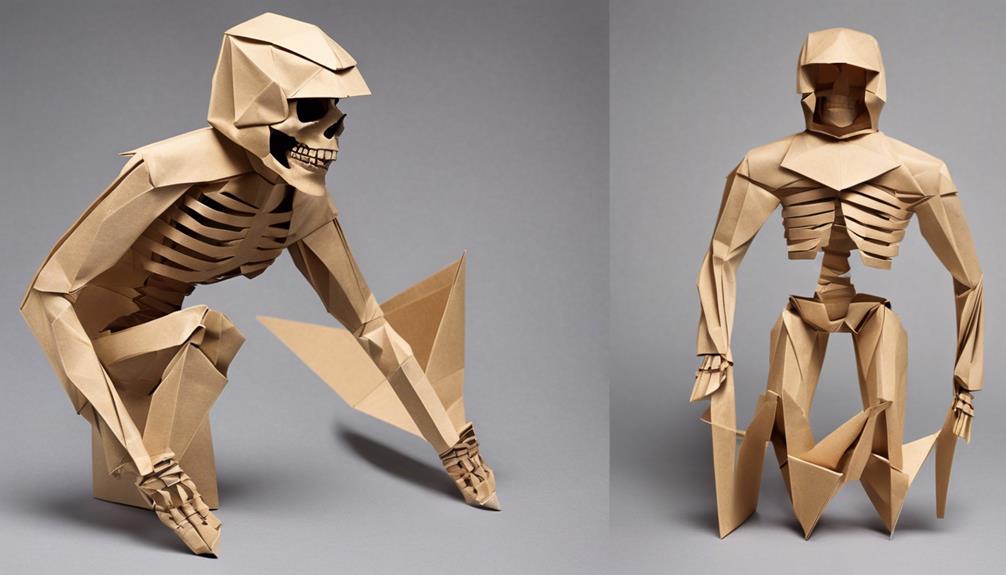General Rules of Skeleton Sport
When it comes to mastering the twists and turns of skeleton sport, understanding the general rules is your compass in the icy terrain of competition. From the required equipment to the precision of start techniques, each element plays a crucial role in your performance on the track. But what truly sets apart the champions is not just following the rules but also knowing how to navigate the fine line between risk and reward. As you embark on this journey through the rules of skeleton sport, prepare to uncover the strategies that separate the mediocre from the exceptional in this exhilarating sport.
Required Equipment

When gearing up for skeleton sport, you'll need a few essential pieces of equipment to ensure your safety and performance on the icy track. Proper attire is crucial, starting with a well-fitted helmet to protect your head during high-speed runs. Make sure your helmet meets safety standards and undergoes regular maintenance to check for any signs of wear and tear.
Additionally, wearing a skin-tight speedsuit will help reduce drag and enhance your aerodynamics on the course. It's essential to maintain your speedsuit by following the manufacturer's cleaning instructions to ensure it remains in top condition for optimal performance.
When it comes to safety precautions, don't forget about your gloves and footwear. Gloves with good grip will help you maintain control of your sled, while sturdy boots will provide stability and support during the intense G-forces experienced on the track. Regularly inspect your gloves and boots for any damage and replace them as needed to prevent accidents. By prioritizing equipment maintenance and safety measures, you'll be well-prepared to excel in the thrilling sport of skeleton.
Start Techniques
To excel in skeleton sport, mastering efficient start techniques is crucial for gaining a competitive edge on the icy track. Technique variations in skeleton starts can make a significant difference in your overall performance. One common technique is the "digger" start, where athletes use their toes to dig into the ice and propel themselves forward. Another technique is the "push" start, where athletes use their hands on the sled to generate initial momentum. Training exercises focusing on explosive leg power and upper body strength are essential for improving start techniques.
When practicing start techniques, it's vital to focus on quick acceleration and maintaining a low, aerodynamic position to minimize air resistance. Proper weight distribution on the sled and precise timing of movements are also key factors in achieving a powerful start. Remember, the start sets the tone for the entire run, so mastering these techniques can give you a competitive advantage on the track. Experiment with different techniques during training to find the one that suits you best and enhances your performance.
Racing Rules

Mastering the rules of skeleton racing is essential for navigating the track with precision and maximizing your performance potential. When it comes to racing rules, there are key aspects you need to keep in mind:
- Penalty Enforcement and Athlete Conduct: It is crucial to adhere to the rules regarding athlete conduct during races. Any infractions can lead to penalties that might affect your overall performance and standings.
- Track Conditions, Weather Effects: Being aware of the track conditions and how weather can impact them is vital. Changes in weather, such as snowfall or temperature fluctuations, can significantly alter the track, requiring you to adjust your racing strategy accordingly.
- Equipment Regulations: Ensuring your equipment meets all the required regulations is important. Any deviations from the specified guidelines can result in disqualification or penalties, affecting your race outcomes.
Safety Protocols
In skeleton sport, prioritizing safety protocols is crucial for ensuring a secure and controlled racing environment. Safety measures and injury prevention play a significant role in safeguarding athletes during skeleton races. Here are some essential safety protocols that are commonly implemented:
| Safety Protocols | Description |
|---|---|
| Protective Gear | Athletes must wear helmets, gloves, and specialized suits to minimize injuries during the race. |
| Track Inspections | Regular track inspections are conducted to ensure the course is safe and free from any hazards. |
| Medical Support | Medical personnel are always present during races to provide immediate assistance if needed. |
| Training and Education | Athletes receive training on proper techniques and safety procedures to prevent accidents. |
Scoring System

When it comes to skeleton sport, understanding the scoring system is essential for evaluating performance and determining race outcomes. Here's what you need to know:
- Judging Criteria: In skeleton sport, judges evaluate athletes based on several factors such as start time, speed down the track, and the ability to navigate corners smoothly. Athlete performance is key to receiving high scores.
- Point Allocation: Points are awarded based on the athlete's performance in different categories. The faster the time, the more points earned. Additionally, style and technique play a significant role in point allocation, influencing competition results.
- Competition Results: The scoring system ultimately determines the winners of each race. Athletes with the highest total points, combining speed and technique, will come out on top. Understanding how points are awarded can help you follow the competition and appreciate the skill and precision required in skeleton sport.
Frequently Asked Questions
How Do Athletes Train Specifically for the Physical Demands of Skeleton Racing?
To prepare for the physical demands of skeleton racing, you focus on nutrition strategies for energy, strength training for power, recovery methods for rest, and perfecting your racing technique. It's a holistic approach to maximize your performance.
What Are Some Common Injuries That Skeleton Athletes May Experience and How Are They Prevented or Treated?
When it comes to common injuries, skeleton athletes might battle strains, sprains, or even concussions. Prevention is key with proper warm-ups, gear checks, and technique refinement. Treatment involves rest, rehab, and professional guidance. Stay safe out there!
Are There Any Restrictions on the Type of Clothing or Gear That Athletes Can Wear During Competition?
When competing in skeleton, safety precautions dictate the gear you wear. There are regulations on performance-enhancing gear and uniform guidelines to follow. Make sure you adhere to these rules to ensure fair and safe competition.
How Do Athletes Mentally Prepare Themselves for the High Speeds and Intense G-Forces Experienced During a Skeleton Run?
So, you think mentally prepping for those insane speeds and g-forces in skeleton runs is a piece of cake? Well, buckle up! Athletes use visualization techniques and master adrenaline management to conquer those intense moments.
What Is the Process for Athletes to Qualify for Major International Competitions in Skeleton Racing?
To qualify for major international competitions in skeleton racing, you must meet specific criteria set by governing bodies. This involves rigorous training, competing in qualifying races, achieving set times, and ensuring your equipment meets the required standards.






